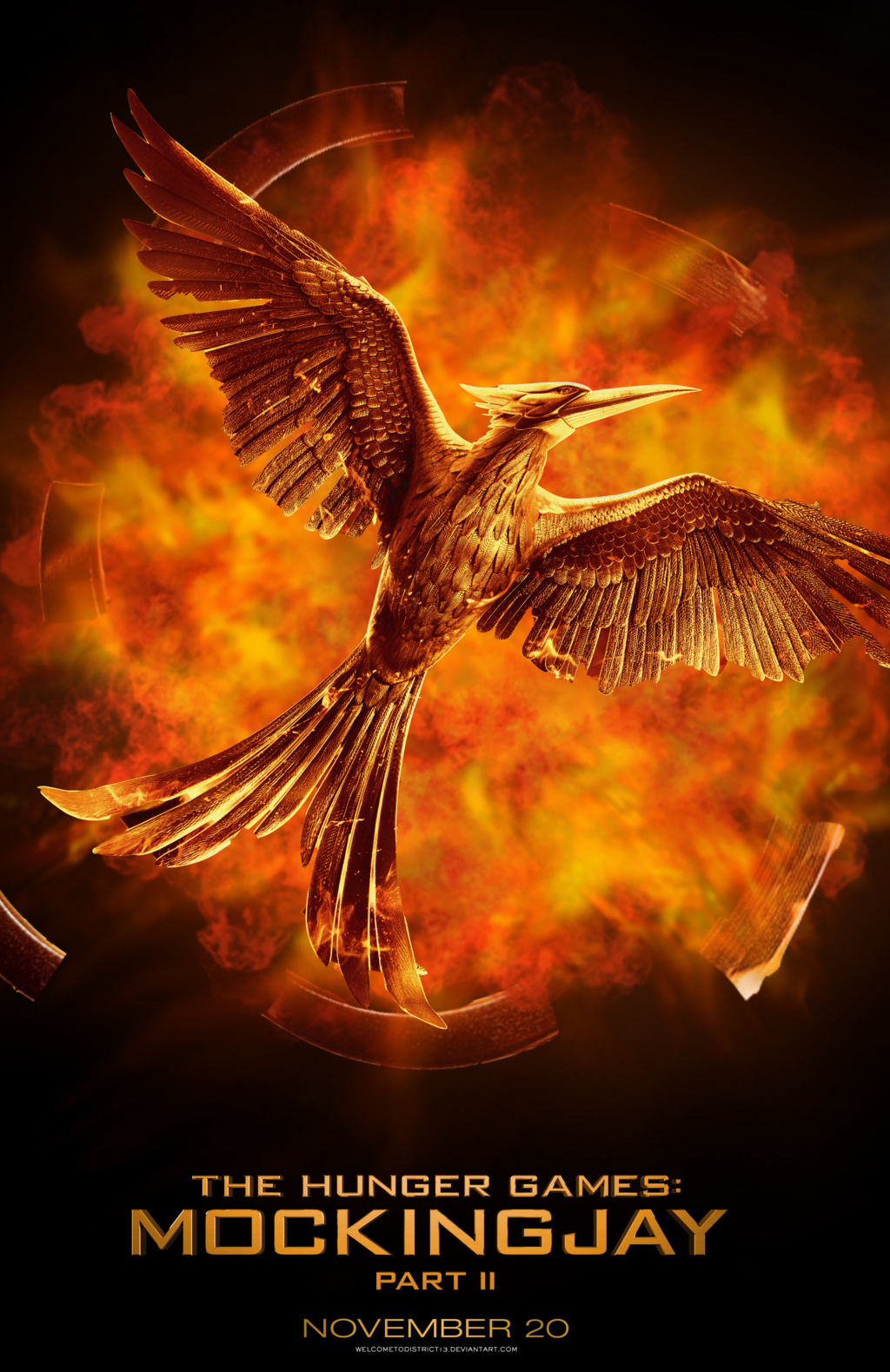Have you ever felt the weight of hope, the responsibility to stand up against injustice, even when fear threatens to consume you? The Hunger Games: Mockingjay – Part 1 throws us into the heart of a rebellion fueled by desperation and a longing for freedom. This film isn’t just a thrilling adventure; it’s a somber exploration of the consequences of war and the sacrifices required for change.

Image: allheartsgoboom.deviantart.com
As Katniss Everdeen returns to District 13, a place shrouded in secrecy and tinged with the brutality of the Capitol’s attack, she becomes the reluctant symbol of hope for a nation on the verge of revolution. This part of the trilogy takes us deeper into the fight against the Capitol, allowing us to see the toll war takes on both sides and the impact of propaganda on the people caught in the crossfire.
The Weight of the Mockingjay
Mockingjay – Part 1 is a stark contrast to the previous films. The action moves away from the thrilling, albeit brutal, spectacle of the Games and dives into the chilling reality of a war-torn world. Gone are the vibrant hues of Panem’s districts; instead, the film is cloaked in the grey tones of District 13’s underground tunnels and the bombed-out landscapes of a ravaged Panem. This visual shift reflects Katniss’s own internal turmoil. She was thrust into the role of the Mockingjay, a symbol of rebellion, and the weight of that responsibility weighs heavily on her.
Throughout the film, we witness Katniss struggling with her newfound status. The pressures of leadership, the constant threat of violence, and the manipulation of propaganda clash with her desire for peace and her love for those she cares about. The Mockingjay, initially envisioned as a tool to unite the districts, becomes a burden Katniss carries with a reluctant but determined spirit. Her initial fear and resistance slowly transform into a fierce protector of those seeking freedom.
The Faces of Rebellion
Beyond Katniss’s emotional struggle, Mockingjay – Part 1 introduces a complex cast of characters who add layers of depth and complexity to the rebellion. We meet President Coin, the leader of District 13, a woman who, though seemingly determined to liberate Panem, operates with questionable methods and a steely resolve that raises questions about her leadership.
The film also showcases the struggles of the other rebels, highlighting their individual motives and challenges. There’s Gale Hawthorne, Katniss’s childhood friend, who is consumed by his hatred for the Capitol, willing to employ any means necessary for victory. We see the unwavering commitment of the rebels, their willingness to sacrifice for a future they may never see. Their stories serve as powerful reminders of the human cost of war and the diverse perspectives that fuel rebellion.
The Propaganda Machine
As the rebels intensify their efforts against the Capitol, the film exposes the manipulative power of propaganda, emphasizing how it can twist narratives and shape public opinion. The Capitol employs its propaganda machine to portray the rebels as a threat, a necessary evil to be eradicated. The rebels, in turn, use their own propaganda to galvanize the downtrodden people, painting the Capitol as the villain and Katniss as a figure of hope.
The film doesn’t shy away from questioning the morality of propaganda, showing how it manipulates people into believing lies and fueling a cycle of violence. The audience is left to question the truth of what they are witnessing, wondering if they are watching a revolution driven by genuine ideals or a manufactured narrative.

Image: moviecracy.blogspot.com
The Toll of War
Mockingjay – Part 1 doesn’t shy away from showcasing the devastating impact of war on the people of Panem. The film paints a bleak picture of a society torn apart, where human lives are seen as expendable by both the Capitol and the rebels. We witness the destruction of cities, the pain of loss, and the emotional scars left in the wake of violence.
The film challenges us to reflect on the consequences of conflict, reminding us that there is often no clear winner in a war. It highlights the cost of human life, the trauma of loss, and the difficulty of rebuilding after such devastation. This grim reality serves as a stark reminder of the importance of peace and the need to find solutions that do not rely on violence.
A Call to Action
The Hunger Games: Mockingjay – Part 1 is more than just a film; it’s a call to action. It urges us to question the systems of power that exist, to stand up against injustice, and to fight for a better future. The film reminds us of the importance of empathy, compassion, and the value of human life.
As Katniss struggles with her role as the Mockingjay, she inspires us to find the courage within ourselves to make a difference. The film underscores the power of collective action, showing how individuals can come together to create change. It emphasizes the responsibility we have to fight for what we believe in, even in the face of adversity.
Watch The Hunger Games Mockingjay Part 1
Conclusion
Mockingjay – Part 1 is a powerful and thought-provoking film that delves into the complexities of war, rebellion, and the human cost of conflict. It challenges us to reflect on our own beliefs and to question the narratives we are presented with. The film is a reminder that even in the darkest of times, hope can emerge, and that even the smallest voice can contribute to creating a better world. The journey of Katniss and the rebels leaves us with a sense of urgency, urging us to stand up for what is right, to fight for justice, and to never give up hope.





